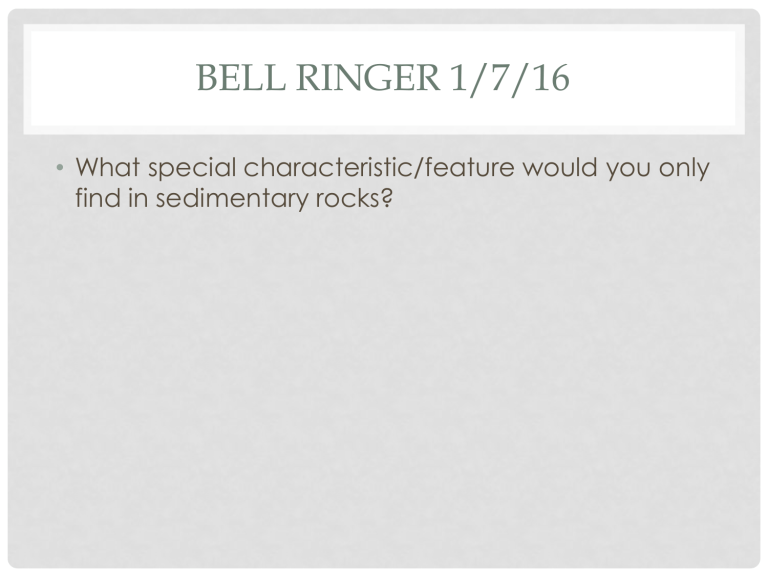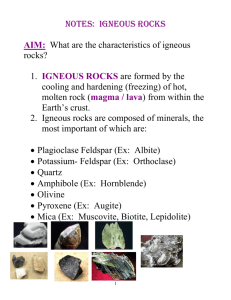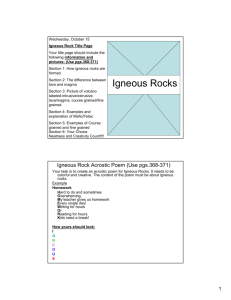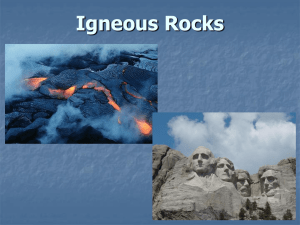Igneous Rock Notes

BELL RINGER 1/7/16
• What special characteristic/feature would you only find in sedimentary rocks?
IGNEOUS ROCKS
• Igneous rocks form as a result of cooling and solidifying of rock material that was once molten.
• Lava: Molten rock material on earth’s surface
• Magma: Molten rock material inside of earth
• Igneous rocks are classified based on where they formed
• Intrusive (Inside of Earth) – underground from magma
• Examples:
Granite Pegmatite
Peridotite Gabbro
• Extrusive (Exited Earth and is now on the surface) – at the surface from lava
• Examples:
Basalt Rhyolite
Pumice Scoria
FORMATION OF IGNEOUS ROCKS
• Solidification: Changing from a liquid to a solid
• Crystallization: Liquid to solid that causes crystals to form
COOLING RATE
1.
Slow – magma cools slowly underground. This give crystals a chance to grow, resulting in larger crystals.
COOLING RATE
2.
Fast – lava cools quickly at the surface because it is exposed to air and water****. This doesn’t allow crystals to grow, resulting in small crystals.
• **If cooling rate is really fast, no crystals grow, resulting in a glassy texture.
RELATIONSHIP BETWEEN COOLING
RATE AND CRYSTAL SIZE t a l s y r
C z e i s
Cooling Rate
IDENTIFYING IGNEOUS ROCKS
1.
Determine Texture
• Coarse- Minerals visible to the naked eye
• Examples: Granite, Pegmatite, Gabbro
• Fine- Need magnification to see minerals
• Examples: Basalt, Rhyolite, Andesite
IDENTIFYING IGNEOUS ROCKS
2.
Use grain size to determine texture
IDENTIFYING IGNEOUS ROCKS
3.
Check color and density for composition
IDENTIFYING IGNEOUS ROCKS
4.
Use chart for mineral composition
• http://www.ck12.org/book/CK-12-Earth-Science-
Concepts-For-Middle-School/section/3.8/
• Lava Flow GoPro
• Lava entering the ocean
• Smart or not so smart?








